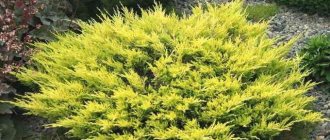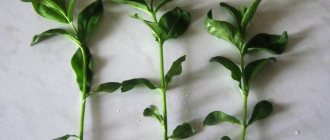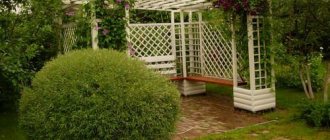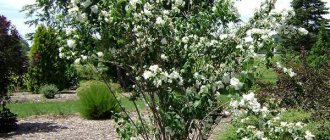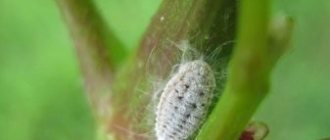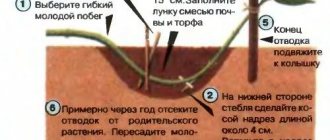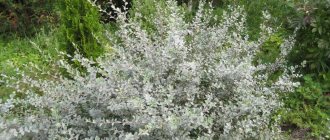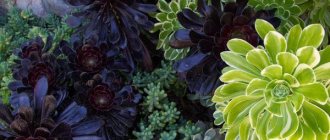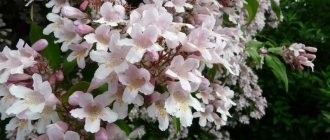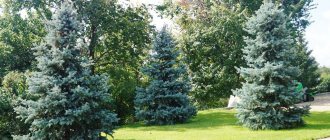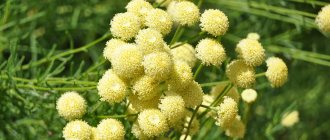Description of the plant
Rock juniper is a plant that prefers rocky soil. In nature it occurs in shrub form and as dioecious trees. In height, juniper, under favorable growth conditions, can reach a height of 9-18 m. Moreover, the girth of the trunk will also be very significant, 0.8-2.0 m. When grown in domestic garden conditions, juniper will not be able to reach such dimensions.
The plant is notable for the fact that its crown originates almost immediately at the base of the plant. Initially, the apical part of the tree has the shape of an irregular cone, and then, as it matures, the apex becomes rounded. The bark on the trunk is brown. When young, the shoots are colored pale blue.
Photo of rock juniper
The foliage is opposite. Its shape is oval-rhombic. The length of the leaf blades barely reaches 0.2 cm, while the width is only 0.1 cm. In addition to foliage, the plant has needles in the form of needles. One needle reaches about 12 mm, with a width of 5 mm.
Round cones form on the branches. They are painted in dark blue tones, with a superficial bluish coating. The length of the cones is within 0.5 cm. The ripening of the cones occurs in the second year of their life. Then seeds of a dark brown color are formed inside them.
Where and how it grows, conditions

Rock juniper is most often found in Canada (British Columbia and southwestern Alberta), northern Mexico and the United States (northern Arizona, Oregon and western Texas). Juniper grows on rocky soil in the mountains, at an altitude of approximately 1200-2700 meters above sea level. This type of juniper is cultivated very rarely.
Planting juniper in the ground
When planting, you should prepare a planting hole twice the size of the root system. When planting dwarf juniper bushes, maintain a distance of 50 cm between them.
Tall varieties of juniper are planted at a distance of 2 m from each other. As soon as the bush reaches 10 years of age, it will begin to actively grow and develop.
At the bottom of the planting hole, a drainage layer (20 cm) of broken brick or crushed stone is created. The root system of a juniper seedling is immersed in a container of water, to which it is recommended to add a little manganese (to prevent diseases).
Photo of preparation for planting juniper in the ground
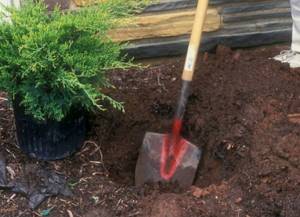
Advice!
If a juniper seedling was purchased with a ball of earth, it is planted with it in order to minimize damage to the roots and shorten the rooting period.
The soil for filling the hole is enriched with peat, sand and turf soil. The root system of the seedling is placed in the center of the hole, and the remaining voids are filled with a nutrient mixture. It is imperative to pay attention to ensure that the level of the root collar is in the same plane as the soil level. If you deepen it, the root collar may suffer from rot.
The planting is generously moistened and sprinkled with mulch. Pine needles, wood chips or peat can be used as mulch.
Features of care and planting of rock juniper
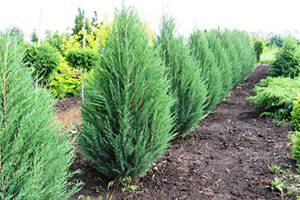
Rock juniper does not make any special demands on the soil. The plant feels good in urban conditions and is not susceptible to gas pollution and smoke. Also, the shrub is not afraid of heat and requires a lot of sunlight.
Those plants that have a vertical crown must be protected from strong winds. Therefore, when planting a tree, you need to give preference to quiet and sunny areas.
A slight shading of the plant is possible, but if you place it in deep shade, this will negatively affect the condition of the needles. The crown of the tree will become bare, and as a result, the decorative qualities of the juniper will be lost. The plant itself will weaken and may even die.
It is good to plant juniper on rocky soils containing sand and crushed stone. The plant needs high-quality drainage, since even a slight stagnation of moisture will negatively affect the condition of the root system, and therefore the tree itself. It is important that the salt content in the soil is minimal.
If you plan to plant a plant from a container, you must first moisten it. To do this, the earthen ball is placed in water for 2 hours. The hole for planting such a plant should be at least 2 times the size of an earthen ball in depth.
Rock juniper does not have any special care requirements. Periodically, you should slightly loosen the soil under the tree. This must be done after watering the plant. At the same time, you need to weed the ground and remove all weeds. Mulch the juniper immediately after replanting, using peat or pine bark for this purpose. The soil for planting should consist of 2 parts peat, 1 part sand and 1 part turf soil.
Different species of rock juniper differ in their frost resistance, so when choosing a plant for a specific site, it is necessary to take into account climatic conditions. As for feeding, it should be carried out during the active stage of the plant’s growing season, which occurs in April and May. You can use Kemira-universal fertilizer. For 10 liters of water you will need 20 g of product.
During wintering, rock juniper must be tied with fishing line, which will avoid breaking the crown after a snowfall. In addition, you need to ensure that a lot of snow does not accumulate on the branches in winter.
As for pests, the greatest danger to rock juniper is sawfly, scale insects, scale insects and aphids. In addition, the bush is susceptible to rust. Fungicides are used to get rid of this fungal disease.
Caring for rock juniper
Organizing the care of this plant is not a difficult task. Juniper is an unpretentious crop that can adapt even to urban living conditions. In the first ten years of life, the plant grows slowly.
Mature trees need watering only during periods of persistent drought. At other times, the plant has enough climatic precipitation. Over the entire season, it is enough to moisten the juniper bush three times. Bushes planted recently are moistened more often. In hot weather, they can be sprayed with a warm shower.
Caring for juniper in winter depends on its variety. During snowfalls, it is necessary to remove snow deposits from the columnar crown so that the branches remain unharmed and do not break. To prevent unpleasant events on the eve of winter, it is worth using twine to pull the shoots and press them to the trunk.
How to properly care for juniper? - video
Pruning juniper bushes
The juniper bush can be pruned. It is produced in two cases - for the purpose of healing and molding. The bush has an attractive cone-shaped crown by nature, but sometimes you have to tweak it a little.
There is an urgent need for healthy pruning of juniper when a disease is detected.
Juniper haircut - video
It is recommended to prune in April on a rainy day. By this time, sap flow will begin at the bush. All damaged, dry shoots, as well as those that grow incorrectly, must be removed.
When formative pruning of juniper, you should take it as a rule that shoots should be cut to no more than 2 cm. It is known that the growth of a branch per year is only 10 cm.
Rock juniper diseases and dangerous pests for the plant
The most important disease that can plague juniper is rust. A symptom of rust is porous brown growths. The growths contain an oil with an orange pigment, which can be mistaken for carotene. Once these growths appear on the shoots, they will gradually begin to dry out, and the plant will lose its healthy and decorative appearance.
If a disease is detected, the bush is treated with a fungicidal solution.
Juniper. Juniper diseases - video
Effective anti-rust drugs are:
- "Bayleton";
- "Tilt";
- "Skor";
- "Rogor";
- "Vectra".
In addition to this fungal disease, tracheomycosis (Fusarium wilt) can cause trouble for the beautiful juniper. The cause of the disease may be unsuitable growth conditions - excessively dense soil and waterlogging. This disease directly harms the root system, which ceases its main function - to transfer beneficial substances to the above-ground part.
You can determine that a bush is sick by its dry tops and needles that have changed from green to pale red. After some time, the disease will spread to the entire bush. Fusarium wilt is difficult to detect at an early stage.
If the apical shoots of the juniper have acquired a yellowish or reddish tint, it is worth cutting them off and treating the entire bush with a fungicide. In addition, it is worth treating the soil around the bush trunk with the same solution.
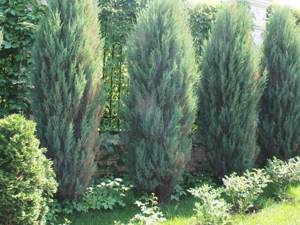
Another serious disease is known that can affect rock juniper - drying out of shoots. You can tell that a plant is sick by the yellow color of its needles in the spring. After which the branches begin to die. Gradually, the disease consumes the entire bush and mushrooms appear on its surface (branches and trunk bark). The recipe for treating shoot drying is the same as for fusarium wilt - cutting off damaged branches and treating with a fungicide.

Often, as a disease prevention, it is necessary to spray juniper with fungicides twice a season. It is recommended to use the following drugs: “Ridomil Gold MC”, “Skor”, “Titl”.
There is another disease - brown schutte. When the juniper is damaged, yellowed needles fall off.
It is noted that most often the disease affects bushes at the beginning of the summer season. If no action is taken, in August oval-shaped fruiting mushroom bodies, painted black, will be found on the plant’s needles. If improper care is provided, or the bush is planted in a damp place, the disease will affect the juniper in a very short time.
To save the plant, it is necessary to take the following measures - remove all damaged areas of the branches, collect all the leaf litter under the bush, treat the entire surface of the juniper and the soil under it with the preparation. For these purposes, you can use the following drugs:
“Quadris”, “Strobi”, “Ridomil Gold MC”, “Skor”.
For prevention, juniper bushes are treated with these drugs in mid-spring and mid-autumn. On this day, the weather should be calm and not rainy so that the solution can dry naturally.
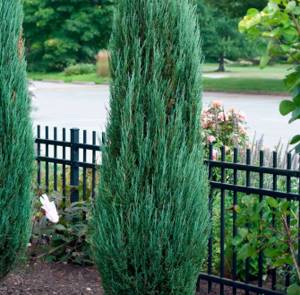
Dangerous pests for juniper are:
- mining moth;
- aphid;
- mite.
To get rid of aphids, juniper is sprayed with the drug “Fitoverma”. A solution of the drug “Decis” will be useful for moths. For scale insects, use a solution of "Karbofos".
Spider mites are often found on juniper branches. You can get rid of it by treating with the drugs “Aktellik”, “Aktara”, “Karbofos”.
Pests and diseases
The most common disease of Blue Arrow juniper, described in this article, is rust; it affects young and old branches, which spoils the appearance of the entire plant and jeopardizes its further growth.
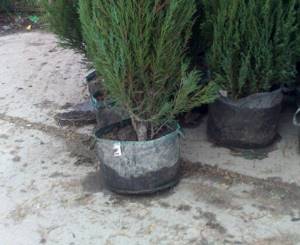
In addition, the plant is attacked by parasites such as aphids and leaf miners, spider mites and scale insects; regular treatments and spraying will help prevent the bush from becoming infected with diseases and pests; disease prevention is the best way to strengthen the bush’s immunity.
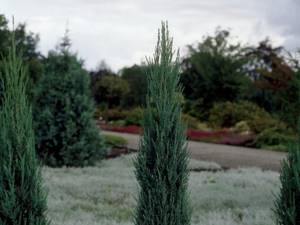
Features of caring for rock juniper include mandatory sanitary pruning, which is important not so much for crown formation as for promoting health and enhancing the growth of young shoots that have successfully overwintered.
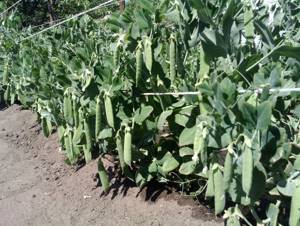
Cultivation of peas- Operation of a piston compressor
- Garden equipment from - features and benefits
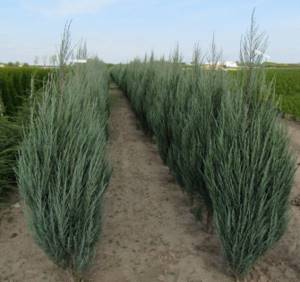
Juniper varieties
American breeders have made efforts to give flower growers the opportunity to grow a significant number of junipers.
The following varieties are suitable for growing in the gardens of mid-latitude flower growers:
- "Wichita Blue"
has a bluish-silver needle color. Differs in slow growth. At 10 years of age, the bush reaches a crown width of 150 cm and a bush height of 400 cm.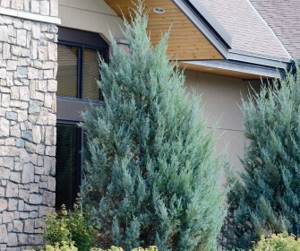
- "Blue Haven"
- can reach a height of 200 cm, with a pyramid-shaped crown width of 100 cm. The needles are pale blue with a metallic tint.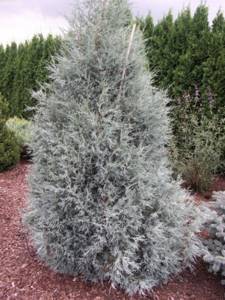
- Juniper variety "Blue Arrow"
reaches a height of 250 cm. The pyramidal crown of the bush is narrow, reaching a diameter of 50 cm. The needles are needle-shaped and blue-green in color.
- "Moffat Blue"
- Differs in winter hardiness. The crown is dense and pyramidal. Its diameter is about 150 cm. The height of the bush can reach a maximum of 600 cm. This variety is not intended for growing in humid climates. The color of conifer needles is blue-green.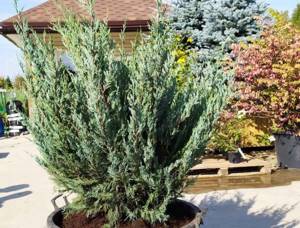
- Variety "Skyrocket"
- able to withstand minor frosts. At the age of 10 years, the height of the bush can reach 600 cm. The shape of the bush is narrow and pyramidal. The needles are colored blue-green. Needs preventive treatment due to the variety's susceptibility to fungal diseases.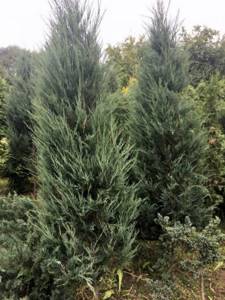
- "Table Top Blue"
- a bush with an oval crown and blue-silver needles. At 10 years of age, the bush will reach a height of 200 cm, and its crown will be 250 cm in diameter.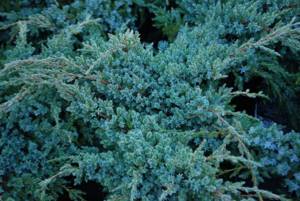
- "Moonglow"
- endowed with a wide pyramidal crown. At the age of 10 years, the plant will reach a height of 250 cm, and the diameter of the crown will be only 100 cm. The color of the needles is rich, silver-blue. The bush becomes especially attractive in winter.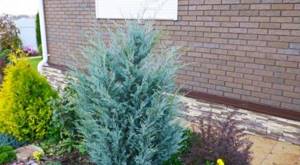
- Juniper variety "Springbank"
- a bush that prefers sunny areas. The crown is columnar and narrow. At 10 years of age, the bush reaches a height of 400 cm. The needles are scaly and have a bluish tint. The ends of the stems are not pressed, but slightly bristling, giving the bush a disheveled appearance.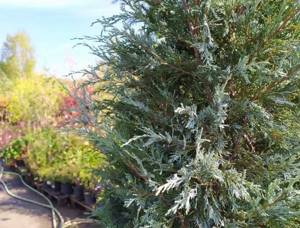
- “Welch”
is a bush with a dense pyramidal crown, whose needles are colored green-silver with a blue tint.
In addition to these varieties, rock juniper “Winter Blue”, “Tollesons Green Whipin”, “ErektaGlauka”, “Sutherland”, “Colorado Green”, “Tollesons Blue Whipin”, “Medora”, “Greenspyre”, etc. are in demand among gardeners.
Photo of rock juniper "Winter Blue"
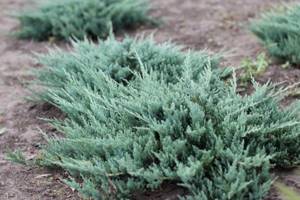
Description of juniper Skyrocket
Skyrocket was bred by breeders in the 19th century. In 20 years, it can reach a height of 8 m with a trunk diameter of 20 cm. Every year, juniper grows 15-18 cm in height and up to 5 cm in width.
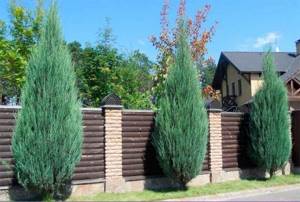
Juniper Skyrocket
The related plants from which Skyrocket is grown are native to the mountain slopes of North America. That is why this variety is unpretentious to the composition of the soil and is winter-hardy. The root system goes deep into the ground, so it holds firmly. Even a strong wind cannot bring down Skyrocket.
This variety is characterized by a columnar shape, branches growing from the very base, and bluish-gray color of the needles. Dense shoots fit tightly to the trunk. Juniper Skyrocket is used as a vertical element in garden plots and other landscaped areas.
Rock juniper Skyrocket has high decorative qualities that attract gardeners all over the world. In Russia, this type of conifer grows better in the southern regions, but with proper agricultural technology and care it can feel great in central Russia. Gardeners are attracted by the rapid growth of Skyrocket juniper, which allows them to quickly achieve the final result when creating garden compositions. The annual growth of blue branches is more than 20 cm in height and 5 cm in width.
The plant's good winter hardiness and unpretentiousness to soil quality also speak in its favor, especially in our country. The tree can grow on poor and even saline soil. It tolerates drought and high air temperatures, thrives in urban climates, and is not afraid of various air pollution.
This type of juniper will be an excellent plant for beginning gardeners, since it does not require artificial formation of the crown; nature itself takes care of the appearance of the plant, making it ideal in shape. Skyrocket rock juniper has a fairly deep root system that firmly holds the plant on loose soils. This makes it quite wind-resistant, despite its high growth.
Rocky juniper in landscape design in the garden
Landscape designers give pride of place to junipers of various types.
The rock variety of juniper is used to frame alleys, in rocky gardens, in alpine slides and rock gardens.
The regular geometric shape of the crown and the decorative color of the needles add special charm to junipers. Therefore, the plant can be used both in solo planting and in group composition. Gardens in the Scandinavian, Japanese, and English styles will not be complete without rock juniper.
Juniper varieties by height - popular types
Juniper (lat. Juniperus) is an evergreen coniferous tree of the cypress family. There are more than 170 cultivated varieties. A hardy, drought-tolerant evergreen plant that is very popular in landscape design. It can be used in the form of individual vertically growing shrubs, as a low-growing ground cover plant for forming hedges, creating windbreaks, and it is also an excellent background for the main composition of a garden plot. The variety of crown shapes is amazing: columnar and pyramidal, spherical and stunted. The most popular in our market is common juniper.
There are three groups of Juniperus plants, which are described below.
Low growing varieties. Height up to 60 cm. These types include:
- “Sargenta”, which has a green crown, its branches can grow up to 2.1 m long;
- Horizontal “Plumosa”, whose branches reach a length of 2.4 m, it has gray-green foliage in summer and bronze-purple in winter;
- 'Wiltoni', or 'Blue Carpet', grows up to 2.4m long and has silver-blue foliage;
- “Coastal juniper”, which has yellowish-green needles and branches up to 2.4 m long.
Medium height varieties - from 60 cm to 1.5 m.
- Chinese “SeaGreen”, branches with dark green foliage spread out in the shape of arches and grow up to 2.4 m;
- “Saybrook Gold” reaches a height of 1.8 m, its needle-like foliage has a bright golden hue;
- “Holbert”, its crown has a bluish tint, and the branches reach a height of 2.7 m;
Large varieties can reach a height of 3.7 m.
- “Pfitzeriana Aurea”, with yellowish foliage, branches up to 3 m long;
- “Pfitzeriana”, its branches reach 3 m, the foliage is bright green;
- “Blue Weiss” has a steely tint and grows up to 1.5 m.
Having studied the varieties of juniper and made a choice in favor of the most suitable variety, it’s time to start planting seedlings. Planting and care in open ground, propagation of juniper - these, at first glance, seemingly labor-intensive processes can be easily mastered even by novice gardeners.
